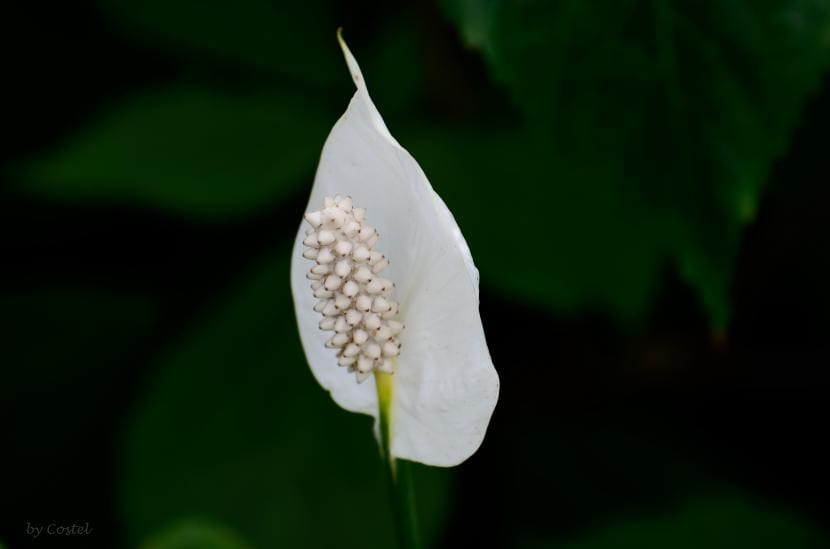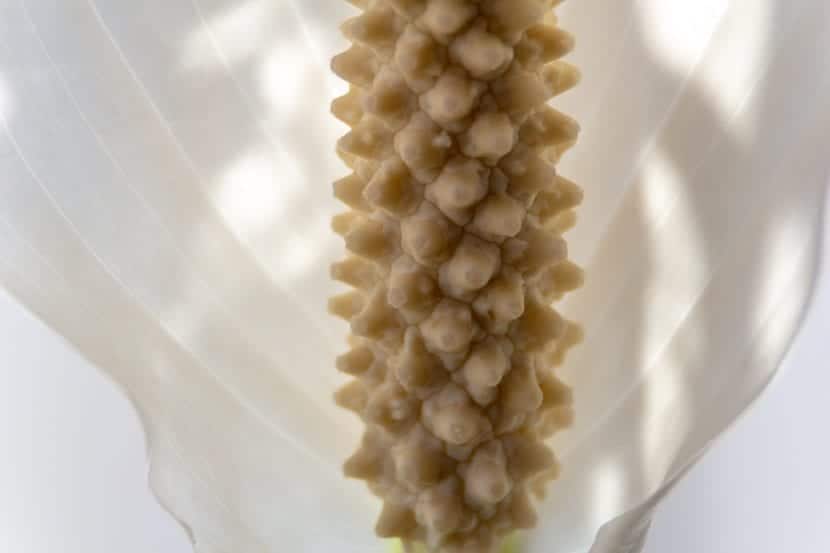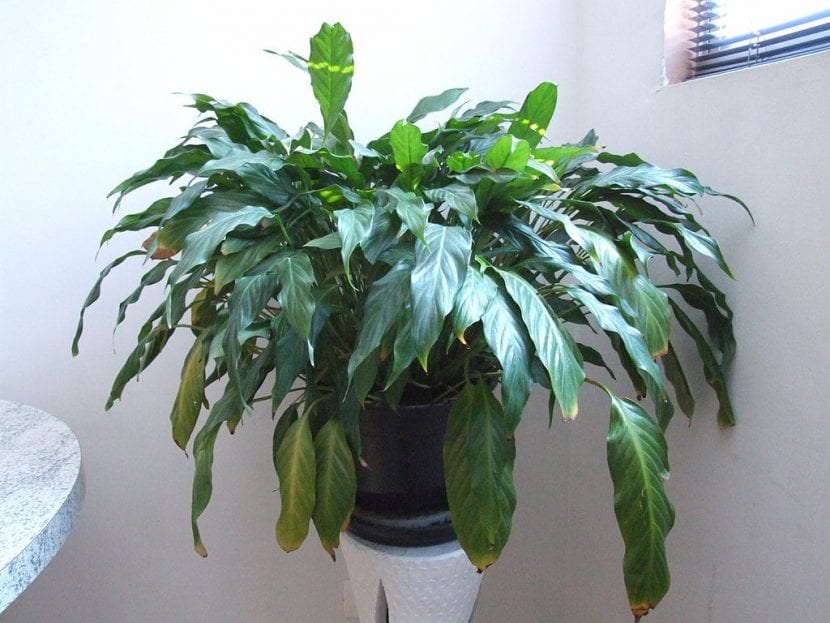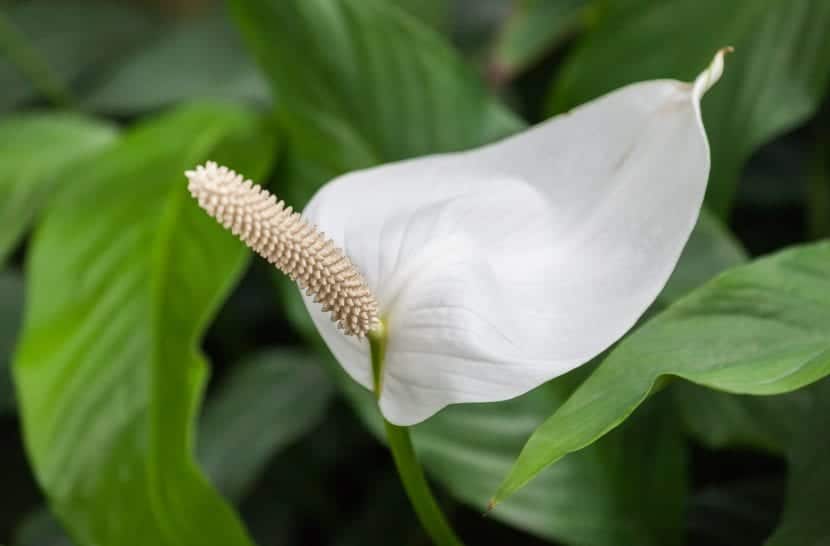
The main attraction of the Spatiphyllum is undoubtedly its peculiar inflorescence. When we find it in nurseries or garden stores they usually have several of them, but once we acquire them it often happens that we only get to enjoy their beauty once or twice more.
Taking care of it is not difficult, but it is true that if our plant does not want to produce new flowers, it is because something is missing or excess. Let's find out why the flower of peace does not bloom and what to do to remedy it.
What are the cares for the flower of peace?

To ensure that your plant is healthy, it is important to provide it with the care it needs. Therefore, we advise you the following:
Location
It depends:
- Interior: the room must have windows through which light enters in abundance. The right "amount" of light is one that allows you to see well during the day without having to turn on any light bulbs.
Also, it has to be near (not next to) the window. Do not put it in front of the glass, otherwise its leaves will burn; and it should not be placed next to it either, as it could have a tendency to grow tilted. - Body exterior:: If you have it outside the home, it must be in semi-shade, such as under the branches of a tree.
Irrigation
Moderate to frequent, avoiding waterlogging. In principle, with an average of 3-4 weekly irrigations during the summer and an average of 1-2 irrigations a week the rest of the year, they should be enough for it to grow well.
When in doubt, check the soil's moisture with a thin wooden stick, or with a digital moisture meter. Another thing you can do, if you have it in a pot, is weigh it once watered and again after a few days; so you can use that difference in weight as a guide to know when to water.
Things to keep in mind:
- Avoid wetting the leaves and flowers frequently, and also during the winter. If not, the risk of rot is high.
- If you put a plate underneath it, remove any excess water after 20 minutes, since the roots do not like to have stagnant water.
- Use rainwater or lime-free water whenever you can. Calcareous water, like the one we have in many parts of the Mediterranean for example, is very hard, so if we want to use it for watering we have no choice but to fill a basin with that water, let it rest for about 12 hours (better if more ), and finally use the one that is more towards the upper half of said basin, trying not to stir the water too much.
Subscriber

It is highly advisable to fertilize the flower of peace from early spring to late summer, with guano (liquid, like the one they sell here), fertilizers for flowering plants, or if preferred with a universal fertilizer following the indications specified on the product packaging.
Planting or transplanting time
En spring, when the minimum temperature is higher than 15 degrees Celsius. If you grow it in a pot, you will have to plant it in a somewhat larger one if you see that the roots are coming out of the drainage holes or if it has been in it for a long time (more than 3 years).
Pests
It can be affected by Red spider, aphids and White fly, especially if the environment is very dry and warm. Treat with diatomaceous earth (for sale here), potassium soap (for sale here) or with neem oil (for sale here).
Management
When overwatered, or if the environment is very humid, it can be affected by fungi:
- Phytophthora: attacks the roots.
- cercospora: causes the appearance of spots on the leaves.
- colleotricum: causes the anthracnose, disease characterized by the appearance of leaf spots.
To treat them, it is best to use a copper-based fungicide, but the ideal is to prevent them since fungi are difficult to eliminate. How are they prevented? Controlling the irrigation a lot, and putting the plant in a ventilated area but away from drafts.
Rusticity
The flower of peace does not resist frost. It is only grown outdoors all year round in tropical and subtropical climates.
Why is it not blooming?

Flowers are undoubtedly its main attraction, so if despite the fact that you are taking care of it in the correct way it does not bloom, here are the possible causes:
Lacks space
The Spatiphyllum is a plant that can be had in a small pot, but not too much. As time passes, its root system develops and there comes a time when it will occupy the entire pot. and it can no longer grow or flourish. For this reason, it is very important transplant it once every two years to a container 2-3cm larger in spring.
You need nutrients
In order to flourish, it needs 'food' in the form of liquid manure.. From the beginning of spring to the end of summer we must pay it with fertilizers, as I said, liquids, being highly advisable the guano for its richness in nutrients. Of course, you have to follow the instructions specified on the packaging.
Don't have enough light
Although we can have it without problems inside, if we place it in a room where there is not much natural light, the flower of peace will stop blooming. To prevent this from happening, we can place it in the living room, for example, or at the entrance of the home.

As we can see, there are several reasons why your precious plant has stopped blooming. We hope that with these tips and tricks you will be able to contemplate the graceful beauty of her flowers again soon.
I have one but it is sad that I can ASER
Hi Marcia.
In order to help you we need to know how often you water it and if you have it in light or shade. In general, you have to water an average of 3 times a week in winter, and once a week the rest of the year. Also, keep it in a bright room, but away from windows.
If you have any doubts, please contact us.
Greetings.
Good, I try to give it the right conditions, it is in a very bright room, the waterings are moderate and I give it the recommended fertilizer, however it still does not flower I do not know what is happening
Hi Javier.
Sometimes the only thing left to do is… wait. This plant blooms in spring, so it is normal that in autumn, for example, it does not have flowers.
By the way, have you ever changed the pot? If you haven't, it may have run out of space and that's why it's not blooming either.
Regards!
Hello, I have several at home but when I buy them if they had flowers, I have been with them for a year and a half but they no longer bloom, I have them inside the house near the window but it does not give direct light and the leaves do grow and are I am removing them that are becoming ugly but flowers just do not grow again. Why is it no longer giving flowers, why should it be?
Hello Angui.
We recommend that you follow the advice in the article, as your plant may need a larger pot or compost.
Regards!
I have the pot outside and this summer it has put many new leaves but it does not bloom.
l morning sun.
what could be missing
Hi Stella.
It is better not to get the sun directly. Also, if it has been in the same pot since you bought it, you have to plant it in a slightly larger one.
regards
Thank you, I will take
consider their councils.
Thanks to you, Rosalia.